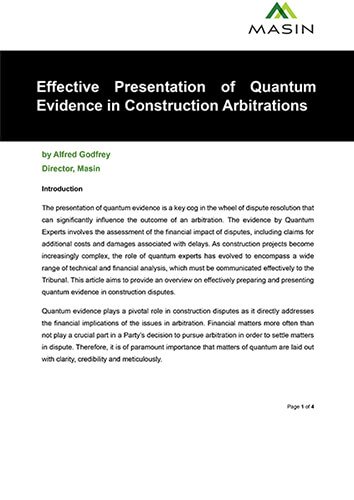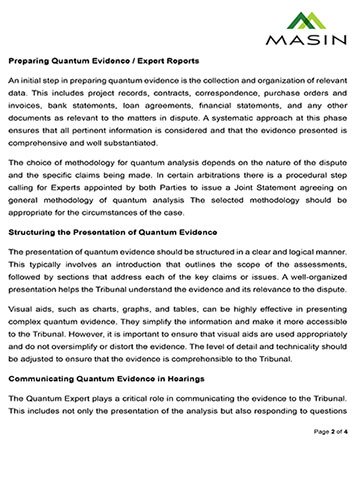

Fundamental Elements of Contract
Introductory Clauses: The introductory section of the contract offers valuable information on the who, what, when, and why of the transaction. It essentially informs the audience about the nature of the contract, where it is made, the date of its creation, the background of the agreement, and what the Parties aim to achieve by entering into the contract. The Introductory Clauses predominantly has following components:
- Preamble
- Parties
- RecitalsInterpretation Clause
- Definitions
Frequently Asked Questions
Get answers to frequently asked questions about everything we do.
What is the primary focus of this eBook?
This eBook provides a comprehensive guide on how to prepare and present quantum evidence effectively in construction arbitration. It emphasizes clear communication, methodological rigor, and practical presentation strategies to support financial claims in disputes.
Who should read this eBook?
This resource is valuable for:
- Construction claims consultants
- Quantum experts and legal professionals
- Arbitration counsels and tribunal members
- Contractors and project managers involved in disputes
What does “quantum evidence” refer to in this context?
Quantum evidence involves the assessment of the financial impact of construction disputes, including claims for additional costs, variations, and damages due to delays. It forms the basis for determining monetary entitlements in arbitration.
What are the key elements of effective quantum evidence presentation?
According to the eBook, effective presentation requires:
- Comprehensive data gathering (contracts, records, invoices, etc.)
- Appropriate methodology selection
- Logical report structuring
- Use of clear visual aids (charts, tables)
- Objective, impartial expert testimony
- Addressing data limitations and alternative expert opinions
What challenges does a quantum expert typically face during arbitration?
Some common challenges include:
- Incomplete or inconsistent project data
- Managing and presenting large volumes of information
- Navigating cross-examination and defending methodology
- Avoiding advocacy and maintaining independence
- Communicating complex analysis clearly to the tribunal
